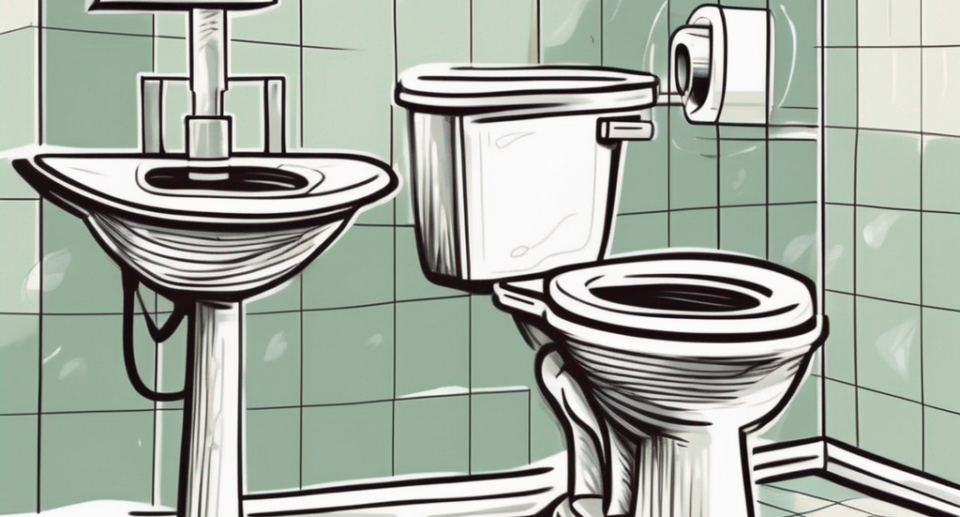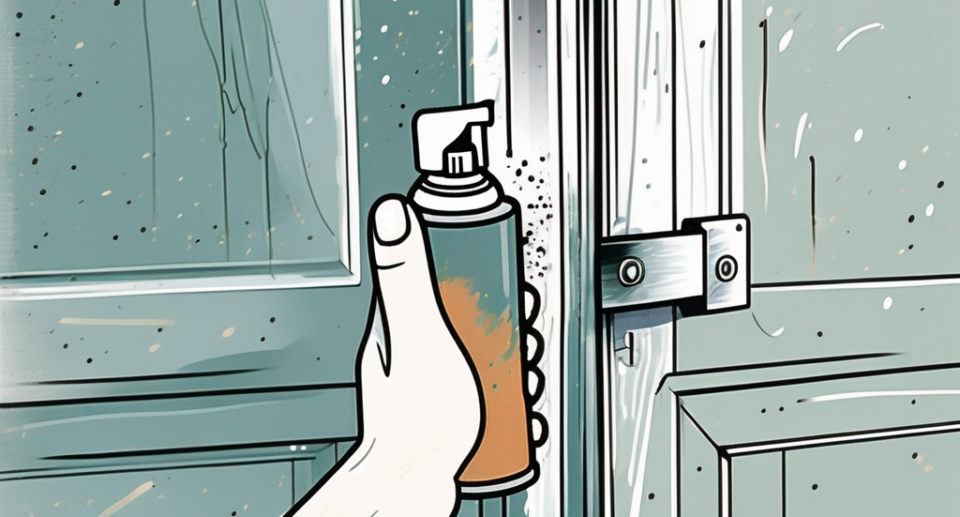Simple and Effective Ways to Unclog a Toilet at Home

Unclogging a toilet can be a messy and unpleasant task, but it doesn’t always require calling a plumber. There are several do-it-yourself solutions that can effectively clear toilet clogs and save you time and money. In this article, we will explore different methods for unclogging a toilet, offer expert advice on common toilet troubles, provide helpful tips for preventing and dealing with clogs, and highlight important warnings when attempting to fix a toilet clog yourself.
DIY Solutions for Common Toilet Clogs
How to Safely Plunge a Toilet
One of the most common and effective methods for unclogging a toilet is by using a plunger. To safely plunge a toilet, start by ensuring that there is enough water in the bowl to cover the plunger. Place the plunger over the drain hole and firmly push down, then pull up quickly. Repeat this motion several times until the water starts to drain. Be careful not to use excessive force as it may cause water to splash out of the bowl.
If plunging doesn’t solve the issue, try using a toilet auger, also known as a plumbing snake, to remove the clog. Insert the auger into the toilet drain and rotate it clockwise until you feel resistance. Once you’ve reached the clog, twist the auger to break it up, then pull it out. Flush the toilet to check if the clog has been cleared.
A Plumber’s Recommended Method for Using a Toilet Brush
In some cases, a toilet brush can also be used to unclog a toilet. Start by wearing rubber gloves to protect your hands. Insert the toilet brush into the drain hole and gently push it in and out to loosen the clog. Once the clog is dislodged, flush the toilet to see if the water drains properly. If the clog persists, try using a plunger or a plumbing snake to further clear the blockage.
Homemade Drain Cleaners That Actually Work
For minor clogs, you can try using homemade drain cleaners before resorting to commercial products. One effective homemade drain cleaner is a mixture of baking soda and vinegar. Start by pouring half a cup of baking soda into the toilet bowl, followed by a cup of vinegar. Let the mixture sit for a few minutes, then flush the toilet. The combination of baking soda and vinegar creates a chemical reaction that can help break up the clog. If the clog remains, repeat the process or try an alternative method.
Unclogging a Toilet with a Wire Coat Hanger
If you don’t have a plunger or a plumbing snake handy, a wire coat hanger can be a useful tool in unclogging a toilet. Straighten the hanger and create a small hook at one end. Insert the hooked end into the toilet drain and gently push and twist it to break up the clog. Be careful not to scratch the porcelain. Once the clog is loosened, flush the toilet to check if the water flows freely.
Step-by-Step Guide to Using a Plumbing Snake
A plumbing snake, also known as a drain snake or an auger, is a flexible tool used to clear clogs in drains and toilets. To use a plumbing snake, insert one end into the toilet drain and slowly feed it in while turning the handle clockwise. When you feel resistance, rotate the snake to break up the clog. Continue feeding the snake until it reaches the clog and then pull it out. Flush the toilet to see if the clog has been successfully removed.
Using a Wet/Dry Vacuum to Clear Toilet Clogs
If you have a wet/dry vacuum cleaner with a narrow attachment, you can use it to clear toilet clogs. Start by setting the vacuum to its wet mode and ensuring that there is no filter inside. Place the attachment over the drain hole and create a tight seal. Turn on the vacuum and allow it to create suction, which should help draw out the clog. Once the clog is removed, flush the toilet to check if the water flows freely.
The Pros and Cons of Chemical Drain Cleaners
Chemical drain cleaners can be effective in unclogging toilets, but they also come with some risks. These commercial products contain harsh chemicals that can be harmful to the environment and may cause damage to pipes if used incorrectly. If you decide to use a chemical drain cleaner, carefully follow the instructions on the packaging and use gloves and eye protection. It’s essential to use these products sparingly and as a last resort.
Preventing Toilet Clogs: A Few Tips
While it’s helpful to know how to unclog a toilet, it’s even better to prevent clogs from occurring in the first place. Here are a few tips to keep your toilet running smoothly:
- Only flush toilet paper and human waste down the toilet. Avoid flushing items like wet wipes, cotton balls, or sanitary products, as they can easily cause clogs.
- Regularly clean your toilet to prevent the buildup of mineral deposits and other debris that can contribute to clogs.
- Consider installing a toilet paper holder with a built-in shelf for wet wipes or other items that shouldn’t be flushed.
- Teach children about proper toilet usage and discourage them from flushing toys or other objects down the toilet.
- If you have an older toilet, consider upgrading to a more efficient model that uses less water per flush. This can help prevent clogs caused by inadequate flushing power.
By following these simple tips, you can reduce the likelihood of encountering a clogged toilet and save yourself the hassle of having to unclog it.
Expert Answers to Your Toilet Troubles
Dealing with toilet troubles can be frustrating, but understanding the common problems and their solutions can help. We reached out to plumbing experts to answer some frequently asked questions.
Q: Why does my toilet keep clogging?
A: There are several reasons why a toilet may keep clogging, such as excessive toilet paper usage, flushing foreign objects, or issues with the plumbing system. It’s important to address the underlying cause to prevent future clogs.
Q: What should I do if my toilet is overflowing?
A: If your toilet is overflowing, locate the shut-off valve behind the toilet and turn it off to stop the flow of water. Plunge the toilet to remove the blockage, or use a plumbing snake if needed. If the problem persists, it may be best to consult a professional plumber.
Q: How can I prevent toilet clogs?
A: Proper toilet maintenance can help prevent clogs. Avoid flushing excessive toilet paper or flushing non-flushable items such as wipes or sanitary products. Regularly clean the toilet bowl and consider using a septic-safe toilet paper.
Did you know that toilets have been around for thousands of years? Ancient civilizations, such as the Indus Valley Civilization and the Roman Empire, had sophisticated systems for disposing of human waste. In fact, the Romans even had public toilets, known as “latrines,” which were used by both men and women.
Over time, toilets have evolved significantly. The modern flush toilet, as we know it today, was invented in the late 16th century by Sir John Harington, an English courtier and author. However, it wasn’t until the 19th century that flush toilets became more common in households, thanks to advancements in plumbing technology.
Today, toilets come in various shapes, sizes, and designs. From traditional gravity-flush toilets to water-saving dual-flush toilets, there are options to suit every preference and need. Some toilets even feature advanced features like bidet functions, heated seats, and self-cleaning capabilities.
When it comes to toilet troubles, it’s essential to remember that prevention is key. Regular maintenance, such as checking for leaks, inspecting the flushing mechanism, and ensuring proper water flow, can help identify and address potential issues before they become major problems.
Helpful Tips for Preventing and Dealing with Toilet Clogs
Prevention is key when it comes to toilet clogs. Here are some helpful tips:
- Avoid flushing excessive toilet paper.
- Do not flush non-flushable items, such as wipes or sanitary products.
- Consider using a septic-safe toilet paper.
- Regularly clean the toilet bowl to prevent build-up.
- Teach children the proper use of toilets and what should and shouldn’t be flushed.
When faced with a clogged toilet, follow these steps:
- Assess the severity of the clog.
- Try using a plunger first before moving on to other methods.
- If the plunger doesn’t work, try using a plumbing snake or a toilet brush.
- Consider using a homemade drain cleaner as an alternative.
- As a last resort, use a chemical drain cleaner, but use it sparingly and follow the instructions carefully.
- If all else fails, it may be time to call a professional plumber.
Important Warnings for DIY Toilet Clog Fixes
While many toilet clogs can be cleared using DIY methods, it’s crucial to be aware of the potential risks involved. Here are some important warnings to keep in mind:
- Do not use excessive force when plunging, as it may cause water to splash out of the bowl or damage the toilet.
- Be careful when using a wire coat hanger or a plumbing snake to avoid scratches on the toilet surface.
- Exercise caution when handling chemical drain cleaners, as they can be harmful to the environment and may damage pipes if used incorrectly.
- If you’re unsure about unclogging a toilet or if the clog persists despite your efforts, it’s best to seek the assistance of a professional plumber.
Now that you have a comprehensive understanding of simple and effective ways to unclog a toilet at home, you’ll be well-equipped to tackle any toilet troubles that may arise. Remember to take the necessary precautions and consider seeking professional help if needed. Happy unclogging!

Hello, I’m Keith Jones. I’m the author and head of content here of door and window guide. I’ve been in the window and door industry for over 10 years in the UK and North America. I’ve had quite a few roles during my career mainly in Worldwide sales. I’m now semi retired so I thought I’d put my knowledge to good use educating people about all they might need to know about door and window related topics.






